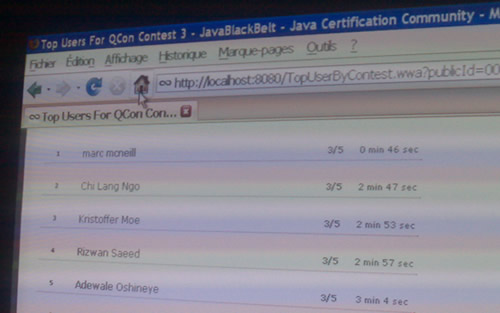How do you test the usability of the software you’ve built? At one end of the scale you could run full usability tests with a sample of users, given them a scenario and let them loose, trying to realise pre-set goals. On the other you could do guerrilla usability testing, just grabbing people and informally doing a usability test at your desk. You could get the experts in to do a usability review. They’ll typically use a bunch of usability heuristics and provide you with a report critiquing the application against the heuristics. But what if you don’t have the budget for usability testing, can’t get hold of any representative users, don’t want to wait for some experts report? How about playing “let’s pretend”? Remember playing doctors and nurses as a child? Well do it again, only this time be Users and Computers. And you’ve got the role of the user.
Create a persona, a pen portrait of your customer. Think in your mind how they act, behave. Maybe you know someone like them, seen someone like them in the supermarket. Now ask yourself some quetions:
How do they behave in their daily interactions with others?
What does their life look like?
What experience do they have with using computers, with using products like yours? How much time have they got? How are they feeling?
Why are they using your product?
Spend a few minutes internalising the persona.
Now turn to your application and imagine you are the persona, using it for the first time. Give yourself a task to complete (make sure the task is something real that your persona would look to achieve, not a goal you think the application will help him achieve – there is a subtle difference). Try and forget all you know about the application (easier said then done) and be the novice user. Walk through the process, speaking aloud (in your head will do). Focus upon I not “the user”.
“I’m looking for this, I’m looking for that. I do this, I do that”. I can’t find this; I don’t think that makes sense”
I want to check my balance. Hmmmm, there are three “balances” here; I’m not a banker, what’s the difference between Running balance and Cleared balance?
I owe my mate some money for the golf holiday, he’s given me his bank account details, I want to transfer some money into his account… huh? I can’t do that. What do I do? Pay a bill? He’s not really a Bill is he… Etc etc.
You don’t need heuristics for this – many of issues the heuristics would help uncover should come out using this method anyway (speed, ease of navigation, speak users language etc). If your persona is having difficulty you can probably multiple the usability issues for a real user.
This approach works for a quick and dirty review of an application’s usability. And if you document your experience make sure you preface it with a description of your approach. Someone who is close to the development of the application, reading your first person critique, is rightly likely to think you are an arrogant so and so. I speak from experience.

